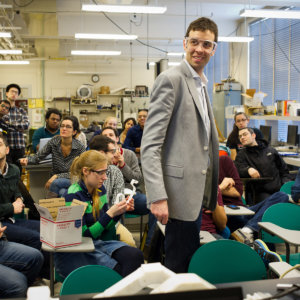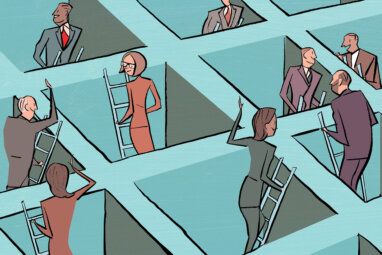MIT For Managers: 3D Printing the Future
Our biweekly exploration of new business ideas from the corridors of MIT.
Topics
Frontiers
One of the most popular exhibits at the “open house” last month, celebrating the 100th anniversary of MIT’s move from Boston to Cambridge, was a 3D printer that churned out playful swirls and circles of soft-serve ice cream. Designed by mechanical engineering students, the ice-cream maker — cobbled together with a low-cost 3D printer inverted inside a small freezer, a Cuisinart, and a tube dispensing liquid nitrogen to freeze the printed shapes — captivated visitors young and old.
In recent years, many of us have seen or heard of hobbyists using 3D printers to make various items out of plastic filament, one layer at a time. Dentists are starting to print dental devices (like crowns) safely and efficiently. Commercially, companies such as GE have embraced 3D printing (known more broadly as additive manufacturing) to build product prototypes quickly and economically. According to MIT’s John Hart, the Mitsui Career Development Associate Professor in Contemporary Technology and Mechanical Engineering, “We are still learning what 3D printing can do today.” However, he says, the convergence of digital design, the Internet, and low-cost automation is certain to open up new vistas. “All that it will do in the future is something we don’t know yet.”
Hart, who teaches undergraduate, graduate, and executive courses in additive manufacturing at MIT, notes that the main attributes of 3D printing thus far have been its ability to customize items (for example, ductwork for aircraft or airway stents for newborn babies) and to test design iterations quickly, permitting faster scale-up using existing manufacturing methods. Yet as the technology advances, users are finding that the list of potential benefits is growing. “Importantly,” says Hart, “you can now print things with complex geometries and mixed materials that traditional manufacturing can’t make.”
Where will additive manufacturing go from here? In the coming years, Hart thinks it will advance in multiple directions, reflecting the different types of value it’s able to create (and the trend toward “democratizing the innovation process”). He encourages students and managers to test the limits of materials and think as creatively and broadly as possible about solutions and opportunities to generate value. Prototyping to test product features and save time, he says, is only one of the directions. Another will be simplifying supply chains by reducing the need for parts inventory or overseas factories. “In situations where the cost of holding inventory is high and demand is low,” Hart says, “there could be a huge value in being able to make replacement parts on the spot.”
Although Hart doesn’t expect that Amazon delivery trucks equipped with 3D printers will be here tomorrow, the field is growing and changing so quickly he thinks that we will soon see mass-market consumer products that incorporate 3D-printed parts. “Managers need to understand the capabilities of additive manufacturing — both now and in the future — and envision how to deploy it to create value.”






Comments (2)
Ryan willson
Siva dasan